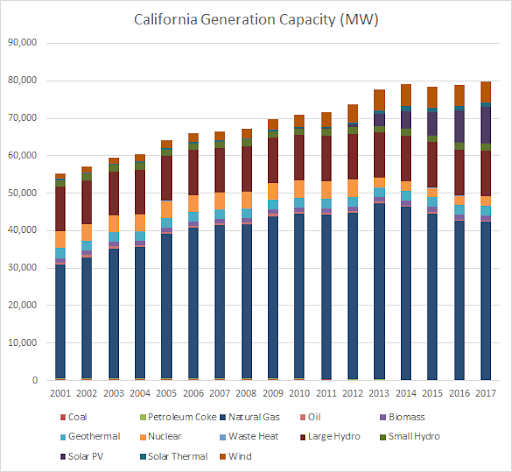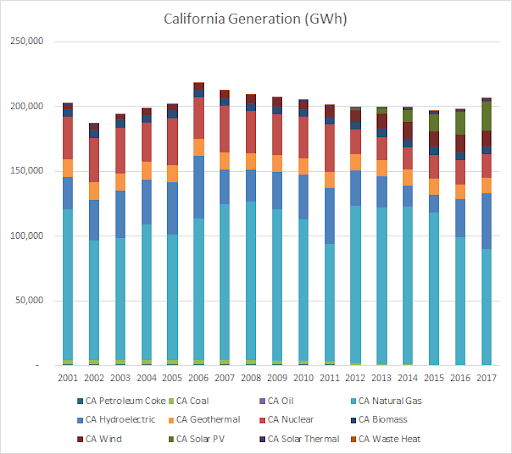|
The cost of renewable energy is a complex topic much clouded by partisan posturing. Solar and wind based electricity generation have reduced dramatically in cost and will continue to do so. It’s become standard to see quotes in mainstream media reporting on the growing commitment to 100% renewable that assume that wind and solar are already cheaper electricity generation than fossil fuel based electricity generation. While this is true for small scale deployment it is not true for 100% deployment. As always, the devil is in the details. Because the fossil fuel and renewable sides are so polarized, they both pick facts to win their case rather than trying to be objective.
The fossil fuel advocates simply want to kill renewables so their arguments are regarded as biased. There are others who advocate CO2 free alternatives like nuclear who don’t want to kill renewables but do want to point out their flaws. Stratosolar is in a similar position. Current renewables have serious flaws that only get exposed as renewables become a bigger percentage of generation. Advocates for renewables see these arguments as a continuation of partisan posturing and ignore them. However there are real problems but so far there are few markets where renewables have a sufficient market share to prove the case and the problems won't be accepted until the case is proven and the problems cannot be denied. Much of the debate is theoretical and academic with lots of assumptions. California is the closest to demonstrating the real problems with real data. The two graphs shown in a previous post are California’s electricity generation from 2000 to 2017. California is a large market with significant renewable generation. Some simple observations can be made from these two charts. Yearly generation has remained nearly constant at around 200GWh. Capacity has increased from around 55GW to around 80GW as renewables were added. This little spreadsheet below shows how these numbers result in a capacity factor of 41% in 2000 reducing to 28% in 2017. This is the predicted consequence of renewables becoming a bigger percentage. Fossil fuel plants get used less as wind and solar are used more but the fossil fuel capacity has to remain to provide backup for when the wind does not blow and the sun does not shine. Capacity has capital costs that need to be repaid. Utilities have to raise prices to cover their costs, which is what has happened in California. GW GWh GW GWh gen capacity 55 482,130 80 701,280 gen 200,000 200,000 Capacity factor 41.48% 28.52% Renewable energy can claim a low cost of generation but the system overall costs more as a result of renewable intermittency. This results in higher electricity costs. Some renewable advocates think the existing generation redundancy covers renewable intermittency but this is not the case. California’s system was balanced at 41% capacity factor in 2000. To stay at 41% they would have had to reduce fossil fuel generation as they added renewable generation. This reduced fossil fuel capacity would not have been able to supply sufficient electricity when solar and wind were not generating. This focus on generation does not capture all the added costs as renewable penetration grows. At the relatively low penetration levels in California renewables sometimes produce too much electricity and generation has to be curtailed. This reduces renewable capacity factor and thus increases cost of generation. Also, additional transmission was added to the grid to connect wind and solar. This is a unique added expense as this transmission is only used for wind and solar. The reduced capacity factor and this added expense has significantly raised electricity prices in California. California is at stage one of renewables penetration. As they continue to add capacity the capacity factor will reduce, producing rapidly rising electricity costs. Solar is about 18% penetration today. It will max out at about 25% when overall capacity factor might get to about 20%. So even at this low level while solar generation costs will continue to fall the falling capacity factor due to increased curtailment will offset this gain.The solution to enable continued expansion is storage. This is stage 2 of renewable expansion. So far there is little storage. There are two big issues. The first is simply getting storage that works, is low enough cost and can scale rapidly. The second is the added cost of electricity as storage additions are added in lockstep with generation additions. Even as generation costs continue to fall storage costs have to be added, keeping overall cost of electricity high. Storage is expensive and unlikely to cost reduce rapidly. This brings us to stage three of renewables expansion. Costs remain high because even with storage, fossil fuel capacity still needs to be maintained to cover long duration intermittency which occurs about 20% of the time. Fossil fuel capacity cannot be removed until a long duration storage technology is viable. The most likely candidate is synthetic fuels. As well as just getting synthetic fuel plants developed, a big impediment is the cost of synthetic fuels will depend on the cost of electricity. If electricity costs remain high then synthetic fuels will be expensive which makes electricity from synthetic fuels even more expensive. The current emphasis on 100% renewables is not based on a sober assessment of the technologies needed to achieve that goal. It is an aspirational goal presented as something that is already feasible. The status quo is fine for the incumbent renewables but is not reducing CO2 emissions and at current rates of penetration will not reduce CO2 emissions until long past the 2050 deadline. As with many subsidized industries the industry becomes dependant and has little incentive to change. New approaches that challenge the failing status quo are needed. Stratosolar is one such approach. By Edmund Kelly
Comments
|
Archives
December 2023
Categories
All
|
|
© 2024 StratoSolar Inc. All rights reserved.
|
Contact Us
|



 RSS Feed
RSS Feed